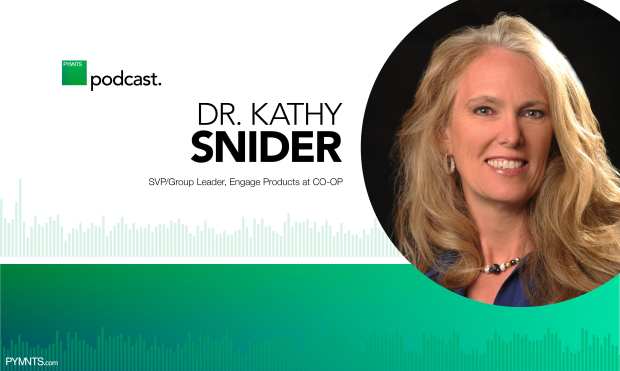Credit Unions Embrace ‘Curbside Delivery’ Mindset For Digital Financial Services

The digital-first economy doesn’t have a monopoly on digital-first phrasing. For example, ask the cable or network programming engineer about “multichannel,” and he or she will have a very different answer than a retailer. Ask someone in the public transportation business about hyperlinks, and the answer will most likely center around transit hubs and not URLs.
The same holds true for credit unions (CUs). “Curbside” has come to mean something very different than it did just a few years ago. The point is not lost on Dr. Kathy Snider, SVP/group leader, engage products for CO-OP Financial Services, who told PYMNTS that a curbside delivery mindset for credit unions can help these financial institutions (FIs) meet their members’ needs — wherever they surface.
Against that backdrop, as Snider explained, “when we think about what ‘curbside’ means, it’s safety and security and speed, and still being able to deliver exactly what the member wants and needs.” That entails a multi-channel approach in the service of better access and self-service delivery, said Snider, where CUs can serve consumers in digital-first ways by leveraging assets at their disposal — tech-enabled tools, payments, branches, ATMs and contact centers. Mobile banking ties all of those channels together, and can streamline the path for users to access transaction information, get stimulus checks or even tackle loan applications.
When it comes to payments, said Snider, there also needs to be room for a variety of options according to the need and the situation. Credit union members may opt for cash, but they also want alternatives from which to pick and choose.
Beyond Cash And Cards
“We’re still using physical cards, but there’s been such an increase and uptake in online commerce and the use of sites like Amazon,” Snider said. There has also been a surge in peer-to-peer (P2P) payments, as “having alternatives that go beyond cash and cards – in a way that is contactless – is very important.”
Branch and ATM experiences are changing as well. As Snider explained, ATMs have been around for decades, and CU members place a lot of faith in them — not just to get cash, but also to perform other functions. CUs can still promote the value inherent to branches, where CO-OP Shared Branching participation means they are able to service each other’s members (and thus provide convenience). Contact centers can cement member relationships and trust, too, maintained Snider, where a phone call can reassure a member that their stimulus check has been deposited and cleared.
Drilling down a bit, members’ payments preferences have shifted, and continue to shift, in the midst of the pandemic. Debit spending has grown, especially as stimulus checks made their way into accounts. As Snider noted, consumers have by and large wanted to keep their credit spending low in a bid to be cautious and avoid any financial risk.
Looking ahead at the cards that facilitate member spend, she said CUs are likely to embrace digital card issuance as a way to make things easier for members who need to replace, say, damaged cards — and where waiting for new cards to arrive in the mail can be a significant inconvenience.
Through digital issuance, Snider told PYMNTS, members can continue to use credentials loaded into their wallets on their phones, so there is no interruption or disconnection from the credit union.
Rewards are valuable components of cards, and can help push them to “top of wallet.” Snider noted that CO-OP is debuting a new rewards solution, Lifestyle Loyalty, that integrates debit and credit rewards. CO-OP’s COOPER Fraud Analyzer will continue to be a critical component of identifying suspicious transactions in the eternal battle against fraudsters.
Offering secure, robust credit and debit payment options, said Snider, can give CUs a strong roadmap for payments growth — especially if they leverage data and analytics (through CO-OP’s Insights Center) to gain insight into why members are spending in the ways that they do. Better insight and data can help CUs shape and deliver services that they can use to further strengthen relationships.
As CUs pivot toward a digital-first and curbside delivery model for financial services, said Snider, working with interoperable platforms such as CO-OP’s can help speed the journey to bring new offerings to users, while gaining holistic insight into what they’ll need in the future. She pointed to the 2020 announcement where CO-OP partnered with Zelle to enable CUs to offer P2P payments.
“Adding these types of services can take a very long time, because you have to integrate providers within the ecosystem,” said Snider. “We were able to move forward very quickly, and offered Zelle to our clients because of the existing relationships and the extensive technology platforms that we have. We had the ability to get all of the information without requiring deep integration from other parties in that transaction.”
